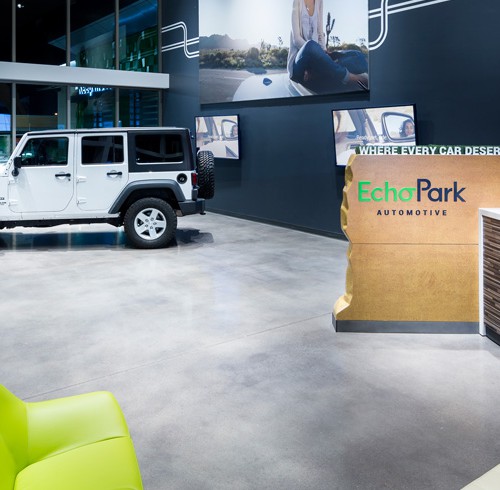Function over Features – A New Era for Dealer Software

The old school product design and development mentality is shifting gears making a much-needed change of course. The days of stacking features are numbered and the focus is now on the end user experience. Finally.
While focusing on the end user for products like websites is not new, focusing on the end user for a product used exclusively by auto dealer employees is reaching a new level.
Take CRM for example.
I recently visited an exclusive event at iMagicLab to hear what dealers had to say about iMagicLab’s current CRM product and also to hear about the new changes from CEO Keith Latman.
The demonstration Keith shared with the group quickly addressed all of the items on the dealer’s wish list. In addition, it also served a dual purpose as an exercise in universal user experience principles. Keith felt they had a solid case for the changes and improvements based on analyzing two years worth of user data.
Keith stressed the importance of creating an environment that helps the user finish things. He wanted a product that simply stayed out of the user’s way with regards to the steps and elements that slow down the path to accomplishing something.
In a similar discussion I recently had with Alex Snyder, Dealer.com’s Senior Director of Product Design. His team approached this concept in a similar manner. He stated, “Monotonous routines need to be simple and include less steps. Adding phone calls, customer notes, and creating appointments shouldn’t mean jumping through a bunch of new tabs or pop-ups of extra unnecessary actions. The goal is improving user engagement.â€
Both Alex and Keith went into detail about the care and consideration given to the natural hierarchy of the important elements, the limitation of distractions, and strong focus on the information provided within the visuals and text. It was evident they’re addressing a bigger, simpler need than most users are even aware of, or how to accomplish it – the need to keep users engaged within the CRM product as well as the importance of simplification as a means to eliminate user error.
Keith stressed this new update was not about adding more features. More features won’t create greater usage or improved experiences as only 17% of their dealers are using the current functionality within the tool now, he stated.
Another benefit of emphasizing simplicity is the reduction of deployment time and reduction of training needed to get up and running on a new system. Previously moving a dealership over to a new CRM system was nearly as difficult moving to a new DMS system. Now dealers can expect a noticeable reduction in this deployment process, a reduction in total training time and improved user adoption time.
Another item catching my attention with the new products was the consideration given to the both the user and the customer’s changing connected lifestyle. Today’s customers behave differently online, with their mobile devices, and also at different times of the day. Dealers need to understand this fact and the systems they use must be able to accommodate this need. These actions aren’t dictated by how we want to control it; rather the consumer’s activity needs to drive the specific steps dealers take.
Keith described how their system not only tracks the interaction behavior with the customer but it learns from that interaction. Then the system becomes aware when an action is about to happen and provides feedback with regards to the customer’s historical behavior with that activity. For example, notifying the user when sending an email at 7pm when the customer typically responds to their emails during lunchtime.
Alex also described the addition of the importance of simple visual notifications which allow managers to quickly know if processes are being completed correctly or if there is been a break down. A quick glance at a screen filled with blue indicators means everything is working as it should be and they can go about focusing on other key management activities. Red indicators inform them that something needs to be addressed and someone else must get involved. Processes stay in check and management is made aware quickly of something they otherwise may have never known about.
CRM solutions must accommodate the need for more productive customer face time as well. The mobile workflow within the CRMSuite addresses this need with iPad desking functionality. Dealer.com has also taken a mobile first approach with their workflows for service and fixed operations tasks that change the way these departments think about dealing with the customers to improve their experiences.
A statement from Keith that underscored this shift in our marketplace was his response to a question about the number of desktop users he expects to see within CRMSuite in couple of years. His response, “None. I hope they’re all using mobile devices.â€
Alex was equally excited about the direction of the mobile showroom user and noted that a key element of that conversion is a direct result of being able to provide a solution that requires very little training coupled with instant user gratification. Alex stated, “Realistically, this effort needs to be about providing the best solution that converts the older, more experienced staff members of the industry – it needs to tell these users what to do, not have them guessing what to do next.â€
These approaches are also addressing a much bigger need within dealerships, the need for greater management involvement. New solutions such as iMagicLab’s CRMSuite and Dealer.com’s new CRM solution strive for greater interaction and understanding of granular dealership activity. Dealer.com also accomplishes this by moving the classic sales rank tracking board from the lunchroom to the CRM tool. This centralized location helps relocate a physical item and puts in front of both sales people and management where they spend more time. This is another way these solutions are improving how people and processes are managed within the showroom.
Today’s successful dealership needs to have 100% buy-in with regards to how the processes drive performance and customer satisfaction. A healthy dealership culture creates greater understanding for what’s really going on within the store. The emphasis on the user experience within these products has the ability to provide a new form of “culture insurance†that every store needs.
User expectations, mobile behaviors, and customer habits are changing so rapidly. The tools we use must reflect these factors to continue improving.
The entire focus and philosophy was refreshing to hear. I was aware of the approach Alex and his team has taken and to hear it from Keith gives me hope for a new wave of quality improvements for the industry in general.












Warning: count(): Parameter must be an array or an object that implements Countable in /home/pg4b1yzvrqqo/domains/test.drivingsalesnews.com/html/wp-includes/class-wp-comment-query.php on line 399